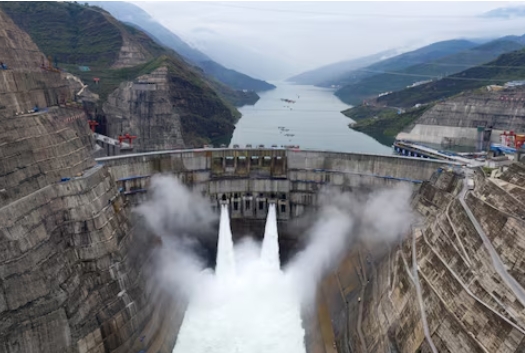Wedoany.com Report-Apr. 16, China Q1 Thermal Power Generation Falls Nearly 5% on YearChina’s thermal power generation, primarily coal-based, declined by 2.3% in March and 4.7% in the first quarter, driven by increased contributions from hydropower and other renewable sources, according to the National Bureau of Statistics (NBS) data released on Wednesday.
The Baihetan hydropower plant is seen in operation on the border between Qiaojia county of Yunnan province and Ningnan county of Sichuan province, China June 28, 2021.
In March, thermal power output reached 509.9 billion kilowatt-hours (kWh), while the first quarter totaled 1.53 trillion kWh. A small portion of thermal generation comes from natural gas-fired plants. Meanwhile, hydropower, the country’s second-largest power source, grew by 9.5% to 78.1 billion kWh in March, reflecting a shift toward renewable energy.
Overall power generation in China increased by 1.8% in March, recovering from a 1.3% decline in January and February. The earlier drop, attributed to an unusually warm winter reducing demand, marked the first power demand decrease since at least 1998, excluding pandemic periods and the 2008 financial crisis. NBS combines January and February data to account for Lunar New Year fluctuations.
The National Energy Administration (NEA) reported a 1.3% rise in power demand for January and February, incorporating small-scale renewable sources like distributed solar, which NBS excludes. NBS data focuses on industrial firms with annual revenues of at least 20 million yuan ($2.8 million) from primary operations.
For the full year of 2024, thermal power generation in China grew by 1.5%, the slowest annual increase in nine years, excluding pandemic-affected periods. Coal, while dominant in the power sector, is also utilized in industrial processes and heating applications across the country.
The rise in hydropower and renewables highlights China’s ongoing efforts to diversify its energy mix, balancing economic demands with sustainable energy development. These trends underscore the country’s commitment to enhancing renewable energy capacity while maintaining a stable power supply.

















